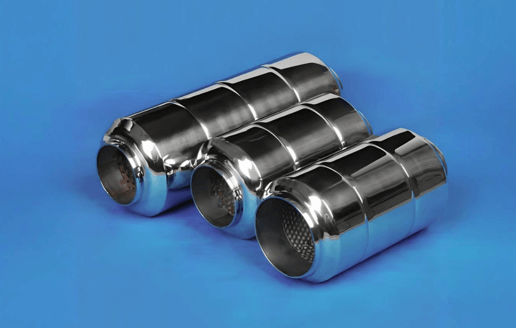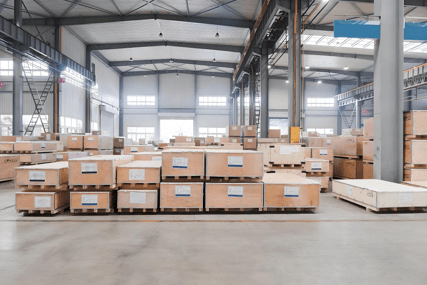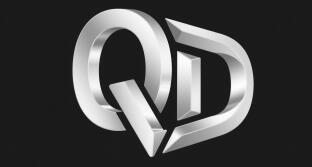Stainless steel is the preferred material for automotive parts. QD’s precision casting process delivers reliable stainless steel part solutions.

Advantages of Stainless Steel in Automotive Manufacturing
Excellent Lightweight Effect
Stainless steel has a very high strength-to-weight ratio. It achieves the same structural strength using thinner and lighter material.
Lightweight stainless steel parts help reduce energy consumption in new energy vehicles. They decrease body weight and increase driving range.
Outstanding Safety and Durability
Stainless steel offers high strength and excellent toughness. It effectively absorbs and disperses energy during collisions, providing strong protection.
Auto parts endure constant vibration and alternating stresses during operation. Stainless steel has excellent fatigue resistance, ensuring long-term reliability for critical components.
Excellent Corrosion Resistance
The dense passivation film on stainless steel effectively resists road de-icing salts, industrial pollutants, moisture, acid rain, and other corrosion threats.
It offers outstanding environmental adaptability. This reduces failures and maintenance caused by corrosion.
Strong Adaptability to Mature Processing Techniques
Stainless steel suits modern manufacturing processes well. These include precision casting, stamping, and welding. This enables the production of complex, dimensionally precise automotive components.
Its good formability allows QD engineers to design more integrated and efficient part structures.
Main Application Scenarios for Stainless Steel

Exhaust System
Mufflers and exhaust pipes
Catalytic converter housings
New Energy Vehicle Components
Battery brackets and housings
Motor structural parts: brackets, end covers, etc.
Engine System & Chassis Structural Parts
Turbocharger housings
Intake pipes
Structural brackets and fasteners: engine mount brackets, chassis links, etc.
Safety components: critical parts for seatbelt retractors, brake system parts.
QD’s Manufacturing Capabilities & Processes
Application of Precision Casting
QD uses advanced lost-wax casting technology. This process produces automotive parts with complex structures, thin walls, precise dimensions, and high surface finish requirements.
It achieves near-net shape for complex parts like turbocharger housings with internal channels and lightweight brackets with hollow designs. This reduces later machining, lowers costs, and fully preserves material properties.
Our engineering team uses CAE simulation analysis. We simulate the mold filling and solidification processes before casting. This helps us optimize the gating and riser system. It prevents defects like shrinkage cavities and porosity from the design stage, ensuring high internal quality of castings.

Strict Quality Control and Inspection System
Incoming Material Inspection: We perform spectral chemical analysis on each batch of stainless steel raw materials. This ensures the material grade meets standards.
Process Monitoring: We strictly control key process parameters like melting temperature and pouring speed.
Non-Destructive Testing: We widely use real-time X-ray imaging for flaw detection. It checks for internal defects in castings like pores and inclusions.
Dimensional Inspection: We use Coordinate Measuring Machines (CMM) to inspect the dimensional accuracy of finished products. This ensures a perfect match with the CAD model and meets assembly requirements.
Selection Considerations
When choosing stainless steel automotive parts, we recommend you consider the following points:
Analyze the Operating Environment
Select the appropriate stainless steel grade based on the part’s operating temperature, exposure to corrosive media, and stress conditions.
For example:
- Use cost-effective 430 series for structural parts in ordinary environments.
- Choose 304/L for parts in high corrosion environments or with demanding welding requirements.
- Select 316L or duplex stainless steel for areas requiring extremely high strength and pitting corrosion resistance.
Balancing Cost and Performance
The initial material cost is only one part of the total ownership cost. Stainless steel parts often prove more economical over their entire life cycle due to their long service life, low maintenance, and high reliability.
Our professional team will help analyze your needs and provide the most cost-effective material solution.
Design and Manufacturing Feasibility
Complex part designs require strong manufacturing capabilities to support them. QD has extensive experience in precision casting. We offer comprehensive technical support from drawing optimization and process selection to mass production.
Contact Us
We are QD Foundry, a company specializing in high-performance stainless steel castings. We focus on R&D and manufacturing. We operate advanced equipment, employ experienced engineers, and maintain strict quality control. We are committed to providing safe, reliable, and durable stainless steel parts for the global automotive industry. Whether you need standard components or complex custom projects, QD is your trusted partner.

FAQ
1. Do stainless steel parts still offer advantages in cost-sensitive projects?
Yes. Although the initial cost of stainless steel may be higher, its long service life, minimal maintenance, and high reliability reduce the total cost of ownership over its entire lifecycle. This includes savings on repairs, replacements, and downtime. In the long run, the cost-effectiveness is significant.
2. Can QD produce stainless steel housings for new energy vehicle battery packs?
Yes. This is one of our key development areas. We use grades like 304/316L and employ precision casting processes to produce battery brackets and housings. These offer high strength, rigidity, and excellent corrosion resistance. They fully meet protection standards such as IP67.
3. What are the main advantages of stainless steel castings compared to stamped parts?
The key advantage is design freedom. Castings can form extremely complex structures as single pieces. This integrates functions and reduces assembly steps. Stamping processes struggle to achieve this. It is particularly suitable for complex, highly stressed components.
4. How does QD ensure quality stability during mass production?
We rely on systematic quality assurance. Each step – from raw materials and molds to production and final inspection – follows Standard Operating Procedures with strict control points. Combined with SPC statistical process control, this ensures every batch matches the sample quality.
5. What materials does QD recommend for high-temperature exhaust components?
For parts like turbocharger housings and exhaust manifolds, we recommend high-nickel austenitic stainless steels with excellent heat resistance, such as 304H, 321, or specialized heat-resistant alloys. These maintain stable performance in prolonged service above 800°C.
6. Does QD support custom production based on client-provided drawings?
Yes. Custom development is our core service. We welcome client concepts or detailed drawings. Our engineering team conducts process reviews and design optimization. We rapidly deliver prototypes and proceed to mass production upon approval.
